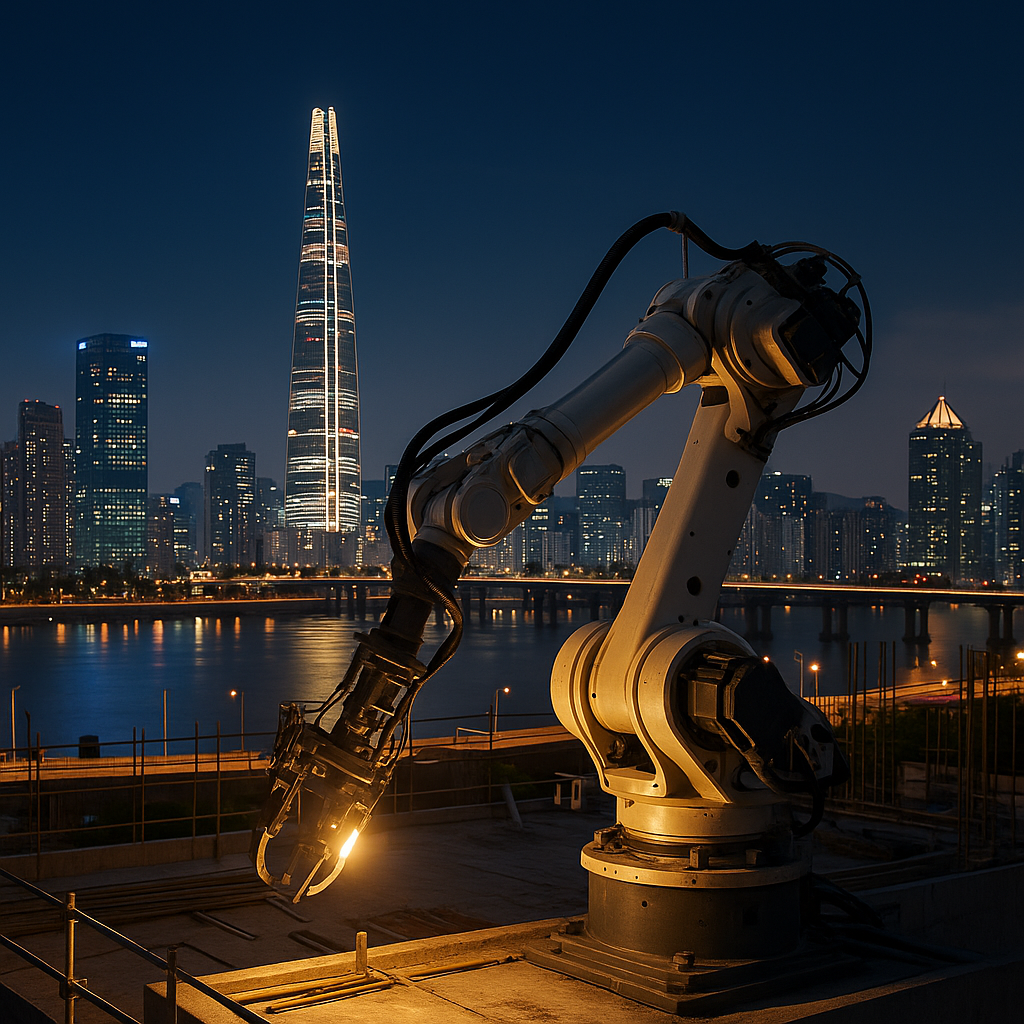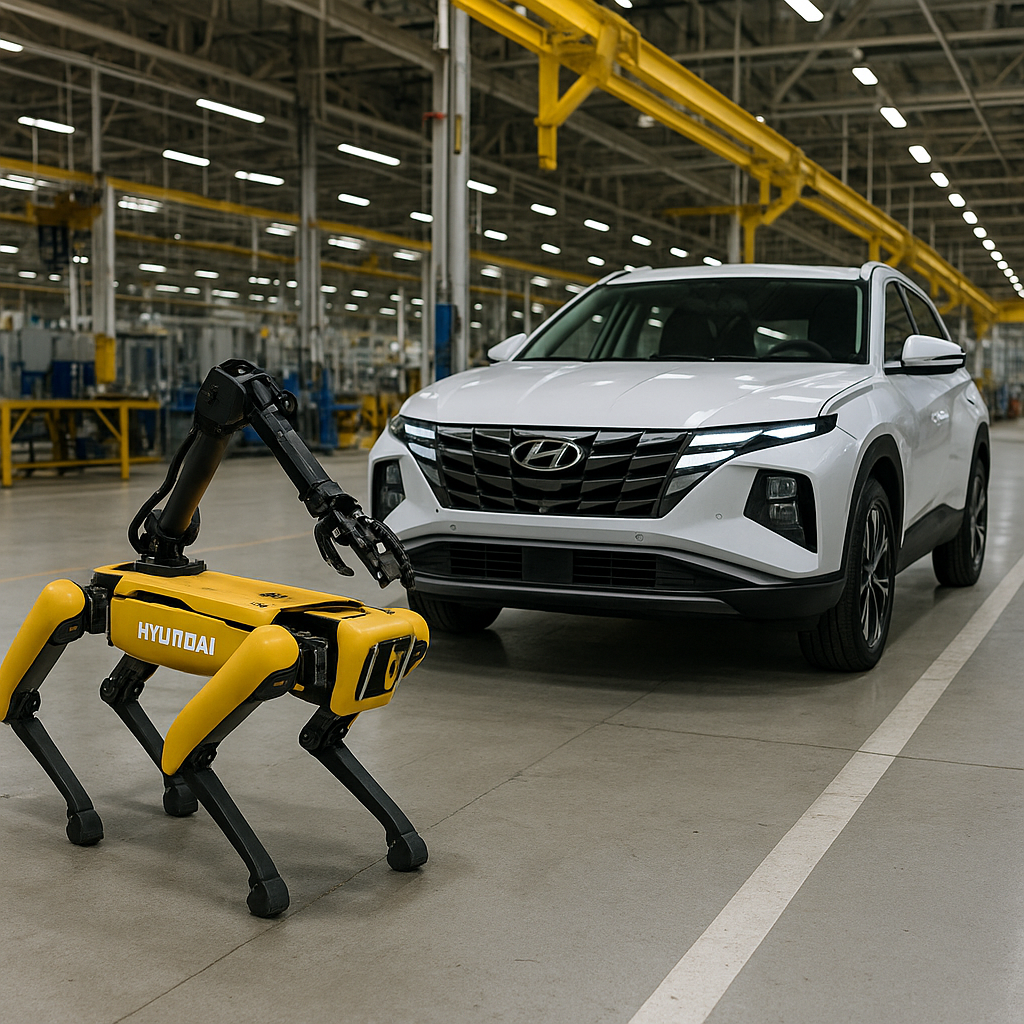| 최초 작성일 : 2025-08-22 | 수정일 : 2025-08-22 | 조회수 : 44 |

The Dawn of the Robotics Era, the Choice of Chaebols In 2025, South Korea stands at a historic crossroads. The population is shrinking, the labor market is contracting, and industries demand higher productivity and efficiency. The fundamental question of “Who will sustain Korea’s future?” inevitably becomes “Which industries will lead, and who will control them?” For more than half a century, chaebols such as Samsung, Hyundai, LG, and SK have powered South Korea’s economic growth. They secured top global rankings in semiconductors, automobiles, shipbuilding, and electronics. But today, their focus is rapidly shifting toward robotics. The reasons are clear. South Korea faces structural challenges that cannot be solved without robots: labor shortages due to low birth rates and aging demographics, pressure for productivity, exploding demand for healthcare and caregiving, and fierce technological rivalry between the United States and China. For chaebols, robotics is not simply a “new business opportunity” but rather a strategic choice for survival. This article does not merely ask why chaebols are investing in robotics. Instead, it analyzes why South Korean chaebols must lead robotics from a structural perspective, and what social consequences and solutions may follow.
1 . Schumpeter’s Creative Destruction Joseph Schumpeter described capitalism as a system of “perpetual innovation.” New industries destroy existing structures while creating greater value. The chaebols’ move into robotics is a textbook case of creative destruction: Hyundai’s shift from internal combustion engines to EVs and autonomous vehicles. Samsung’s evolution from a home appliance maker into a semiconductor giant. Today’s pivot: robots as the new arena of destruction and creation. This is not about supplementing existing industries but designing a new paradigm of growth. 2.Automation and Labor Economics Labor economics highlights the dual effects of automation: substitution and complementarity. Robots replace repetitive, manual tasks, while creating demand for high-skilled engineers, programmers, and technicians. In South Korea, this intersects with the world’s lowest fertility rate and fastest-aging population. Robots are not optional; they are a structural necessity. 3. The Theory of Technological Power Sociologist Andrew Feenberg emphasized that technology is not just a tool but a form of power. Whoever owns and controls technology reshapes the power structure of society. In Korea, chaebols command capital, technology, and global networks. The government supports them with favorable policies. The result: society becomes dependent on the concentration of technological power. Robotics is therefore not only about future technologies but also about who controls power in Korean society.
1. Hyundai Motor – The Symbolism of Boston Dynamics Hyundai’s acquisition of Boston Dynamics in the early 2020s marked a decisive entry into robotics. Boston Dynamics’ quadruped robot Spot and humanoid Atlas became global icons of future labor. Hyundai seeks to deploy them not only in R&D but across logistics, construction, and defense. This signals Hyundai’s transformation into a “mobility + robotics company.” 2. Samsung Electronics – The Fusion of Semiconductors and AI Samsung dominates semiconductors, the “brain” of robots, and is now combining them with AI. It has invested in medical robots, healthcare assistance, and smart factory automation. In an aging society, demand for medical and caregiving robots is expected to soar. Samsung aims to preemptively secure this market. 3. LG Electronics – The Robotization of Daily Life Leveraging its expertise in appliances, LG has expanded into delivery robots, cleaning robots, and caregiving robots. In nursing homes and hospitals, care robots are becoming essential for supporting elderly populations. LG exemplifies how home appliance firms evolve into lifestyle robotics companies. 4. Government – Strategic Industrial Policy The Korean government has designated robotics as a national strategic industry, offering tax benefits, deregulation, and R&D support. This mirrors earlier state support for semiconductors and shipbuilding. Once again, Korea is reviving its model of state-chaebol symbiosis.

1. Demographic Cliff Fertility rate: 0.72 in 2024, the world’s lowest. By 2030, the working-age population will decline by about 4 million. Fewer people mean a direct need for robotic substitutes. 2. Industrial Transformation Semiconductors, automobiles, and shipbuilding remain important but are mature industries. New growth drivers are essential. Robotics integrates Korea’s strengths: sensors, AI, semiconductors, and mechanical engineering. 3. Exploding Social Demand Seniors aged 65+ will account for 21% of the population in 2025, and 30% by 2035. Healthcare and caregiving services are severely understaffed. Robots for care and support are not futuristic but urgent responses to demographic reality. 4. Global Competition United States: Tesla’s humanoid robot Optimus. China: Mass production of low-cost industrial robots. Korea risks becoming a “technology-dependent nation” if it lags behind. Chaebols must therefore spearhead robotics to protect national competitiveness. 5. Path Dependency of State-Chaebol Growth 1960s–80s: Government fostered chaebols for export-led growth. 1990s–2000s: Semiconductors and mobile phones powered globalization. 2020s: Robotics follows the same developmental path. Given this path dependency, non-chaebol actors are unlikely to lead.
Epilogue – The Future in Chaebols’ Hands, the Choice in Society’s Hands Robots are not mere machines. They are a mirror of South Korea’s power structures and future direction. Chaebols’ leadership in robotics is not accidental but structurally inevitable. Yet whether this serves the entire society remains an open question. The key question is clear: not “Will chaebols lead robotics?” but “How will Korean society collectively shape the future of robotics?”














